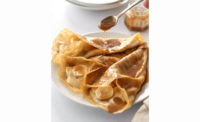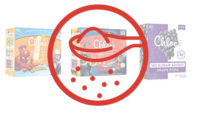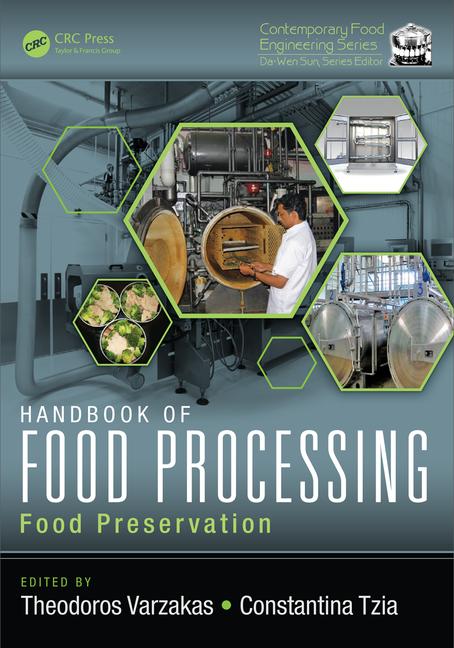Sweetening Strategies for Food Product Developers
Prepared Foods’ R&D Seminar presenters take on the challenges and solutions to successfully formulating foods that meet consumers’ desires for lower sugar—and optimal taste

©getty images



Accelerating Sweet Success: Sweetener Innovations for Sugar Reduction
Wade Schmelzer, principal food scientist; and Alan Skradis, technical services manager, Cargill Inc., presented their Prepared Foods’ R&D Seminar on sweetener innovations to aid the industry in producing products that have sugar reduction.
Their presentation, titled “Accelerating Sweet Success: Sweetener Innovations for Sugar Reduction,” began by highlighting the factors a brand manager needs to know before taking steps to try to reduce the sugar in their products. These factors included media attention, the consumers’ opinions/fears, the WHO dietary guidelines, nutrition facts, sugar taxes and industry responsibility.
The presentation dove deep into the ways consumers are attempting to avoid sugar in their diets. Efforts include drinking water instead of caloric beverages; eliminating certain foods and drinks from their diet; removing table sugar from food and drinks; utilizing nutrition fact labels to find products with less sugar; and using low-calorie sweeteners to substitute sugar. Additionally, the seminar covered what they termed “the most eluded ingredients,” with sweeteners being three (sugar, corn syrup and artificial sweeteners) of the top four avoided foods.
In addition to covering consumer opinions and trends, Schmelzer and Skradis also included the FDA’s New Label information, which puts more focus on sugar and calories. Attention will be added by showing calories in a larger size, and added sugars will be outlined separately. Daily value will be listed at left to be more prominent, and serving sizes will be more accurate—to imitate how much people normally eat/drink at one time. This means a sugar and calorie increase on the label. Lastly, the Nutrition Facts panel will now depict the content of the entire package, if the product is intended to be consumed completely.
The problems and challenges were outlined in detail, before Schmelzer and Skradis offered Cargill’s solution that solves a variety of these issues. The pair takes the audience through how the stevia leaf extract is purified. First, the leaf is simply harvested and dried out. The dried leaves are then steeped in water, so sweet glycosides can be extracted from the leaves. Food-grade alcohols also are used to separate the sweet glycosides from the leaf components. Cargill’s stevia-based sweeteners include ViaTech® TS300+ and Truvia® RA95. The company also uses fermentation to produce EverSweet, a sweetener made with Reb M and D steviol glycosides.
Other solutions listed includes Zerose™ erythritol, which offers solutions for both health and indulgence. The ingredient has the similar taste and functionality of sucrose, with the added benefit of having zero calories and the highest digestive tolerance, compared to other polyol sweeteners. Zerose is suitable for many food and beverage applications.
Finally, the presenters outlined a holistic approach to sugar reduction. Companies can do this by targeting customers’ use level, boosting sweetness, managing sweet-sour balance, optimizing taste and creating mouthfeel in the products they wish to improve. This is a good starting point to use as a guideline as a company first starts visualizing the challenge of reducing sugar in their products.
“Accelerating Sweet Success: Sweetener Innovations for Sugar Reduction,” Wade Schmelzer Schmelzer, principal food scientist; and Alan Skradis, technical services manager; Cargill Inc., Wade_Schmelzer@Cargill.com, Alan_Skradis@cargill.com
— Summary by Jessica Glass, Contributing Editor
Third-Generation Stevia Extracts
Second-generation stevia extracts were all about high-purity Reb A. Third-generation stevia extracts are based on better tasting steviol glycosides with the highest commercial value, Reb A, B, C, D and M. Short-term opportunity is to use the better tasting, third-generation stevia in sugar-free products and to formulate with the less expensive second-generation stevia in 50% reduced-sugar products. Longer term opportunities include stevia without farm, i.e., made by fermentation or enzymology, which will soon co-exist with farm-based stevia. Stevia in native and modified forms also have been approved for use as natural flavors.
Alex Woo, Ph.D., chief innovation officer for Nascent, explained, “Flavor is being redefined as a combination of not only taste, but also smell, sight, sound and touch.” Thanks to the rapid advances in neuroscience in the past 15 years, receptors for all five primary tastes have been identified. Contemporary taste and smell neuroscience is the foundation for sweetener and sweetness-modulator ingredient technologies. In his seminar presentation titled “Third-Generation Stevia Extracts,” Woo gave detailed information on such sweetener technologies.
Technologies go from emerging (discovered but not yet approved); to pacing (first to market—setting the pace); and to mature (patents expired and technology commoditized). Stevia (second and third generation) currently are in the pacing category, while fermentation-based and enzymology-based stevia remain in the emerging category.
Third-generation stevia extracts are blends of steviol glycosides A, B, C, D and M; each with their contributions to a better sweetening experience. Reb B is structurally similar to A but less sweet (150 times sweeter than sugar) and also less bitter. Reb C is much less sweet than Reb A, at only 30 times sweeter than sugar. Reb C, at 80-95% purity, was FDA GRAS in 2015 and is the first minor steviol glycoside proven as a sugar sweetness enhancer and labeled as natural flavor. Reb D is 221 times sweeter than sugar and tastes better than other steviol glycosides. Reb M is 250 times sweeter than sugar and the sweetest and least bitter of all.
“Specific blends of these glycosides are being used in beverage applications for best taste and [the] least cost,” Woo added.
Stevia without farm is made from fermentation or enzymology, and it is the same molecule Reb M as farm-grown stevia, with the same taste. “Nearly commercially ready in late 2017, each new supplier may need a new GRAS ‘no objection’ letter. Patents are held for both fermentation-based stevia and enzyme-based stevia by a few biotechnology leaders and their food ingredient partners,” Woo explained.
One of the mechanisms for sweet taste modulation is cross-modal correspondence between taste and smell. It is how the brain processes information from different senses to form multisensory experiences in our daily lives. Smell, touch, sight and sound—all can increase sweetness perception for reduced-sugar beverages formulated with stevia.
Woo described, “Retro-nasal sweet smell is how we make the perception of what is in the mouth sweeter.” Many sweet taste modulators now are legally labeled as “natural flavor” for countries honoring FEMA GRAS.
“Stacking,” Woo advised, “is a sugar-reduction formulation strategy where a combination of plant-based ingredients is used at low levels to build sweetness to the required intensity and profile, while staying below the off-flavor threshold for all the plant-based ingredients used.”
In summary, stevia extract is plant-based; found in nature; non-caloric; 200 times as sweet as sugar; heat- and pH-stable (>3); non-GMO; and kosher and halal. In addition, its FDA GRAS “No Objection” letter was received in 2008. Usage at 0.02% in beverages delivers approximately 5-6% sugar equivalence. Most commonly, it is labeled as “stevia extract” in the U.S. and as “steviol glycosides” in the EU (E960).
“Third-Generation Stevia Extracts,” Alex Woo, Ph.D., chief innovation officer, Nascent Health Sciences, 347-583-2601, alex@nascent-health.com
— Summary by Elizabeth Pelofske, Contributing Editor
Formulating Food and Beverage Products with Honey
The honey bee is distinguished from other bees by its production and storage of honey, and its construction of nests and hives. Of the 20,000-known species of bees, only seven species of honey bees are recognized. The Western honey bee is most common.
Alison Wuebbels, ingredient marketing representative at the National Honey Board explained the importance of honey bees and pollination. “Of the world’s 115 most important food crops, 87 require pollination to produce fruits, nuts and seeds,” she explained. “About one third of the U.S. diet is derived from insect-pollinated plants. Honey bees are responsible for about 80%. This translates to about three trillion dollars in agriculture produce and 35% of the calories we consume,” she noted.
Nectar, the main sugar source for creation of honey, is a sugar-rich liquid produced by plants in glands called nectaries, and it attracts pollinators such as bees. Nectar contains about 80% water with the other part complex sugars. Honey bees take the nectar and create honey in a series of steps in a complex process in their hives.
The most common form of honey is liquid, extracted from the honey comb by centrifugal force, gravity or straining; it is free of visible crystals. Whipped or creamed honey is brought to market in a crystallized state where, at room temperature, it can be spread like butter or jelly. Dried honey is derived from pure liquid honey but includes processing aids. It is dried to a low-moisture content and converted to a free-flowing product available in powders, flakes and granules.
Honey composition varies slightly, according to floral type of nectar used, but typically contains approximately 82% carbohydrates, with some enzymes and amino acids. Honey also contains B vitamins, vitamin C, several minerals and antioxidants. Naturally acidic, honey pH is around 3.9—which kills most organisms.
Wuebbels stated, “Honey flavor is dependent on floral source, with 300 varietals in the U.S. and 3,000 types worldwide.”
On average, honey is one to one-and-a-half times sweeter than sugar, with its sweetness derived from fructose and glucose. Monofloral honeys differ greatly in flavor, but sweetness remains relatively similar. Honey’s color ranges from water-white to dark amber. Light-colored honey typically has a mild flavor, while dark is usually stronger in flavor.
When formulating with honey, substitution is not an exact science and should be based on varietal or blend, manufacturing environment and on the overall sweetener system. Honey usage may be cost-prohibitive in some applications as the sole sweetener, but honey works well with other sweeteners too.
“In brewing, it is about where the honey is added and not for sweetening beer, but when added later in the process, more aromatics and flavor will pull through to the beer,” explained Wuebbels.
Honey speeds up the Maillard reaction, so when baking with honey, the oven temperature should be reduced. Honey is a natural shelflife extender, with its humectancy tying up free moisture and inhibiting mold. Honey also masks flavors from whole grains and functional ingredients, and it provides a more rounded flavor, rather than just sweetening the product.
America’s love-hate relationship with sweeteners is intensifying. Many sweeteners are being compared to tobacco and cigarettes in terms of danger posed to health. In a Packaged Facts online survey, 28% of consumers reported increasing their usage of honey in the last year or two. Honey was perceived as a natural sweetener by 93% of respondents and leads other sweeteners in consumer perception of healthfulness. Honey applications are numerous and include various types of bars, fruit spreads, yogurts and beverages, to name a few.
“Formulating Food and Beverage Products with Honey,” Alison Wuebbels, Ingredient Marketing Representative, The National Honey Board, 303-776-2337, alison@honey.com
—Summary by Elizabeth Pelofske, Contributing Editor
Reb M–Next Generation Stevia Sweetener
Stevia leaf Reb M is a naturally derived, high-potency sweetener with superior taste over Reb A. Reb M allows for greater sugar reduction than Reb A and can be successfully used in a variety of beverages.
According to Kasi Sundaresan, Ph.D., Senior Associate, Global Sweetener R&D for Ingredion Incorporated, “Sugar regulations are trending, with FDA planning added sugar labeling requirements in the U.S.; a tax on sugar sweetened drinks with more than 5g sugar per 100ml in the UK; a 10% sales tax on sugar-sweetened beverages in Mexico; and sugary drink taxes in France.” The stevia market is growing, and consumers are requesting improved sweetness profiles. Stevia leaf Reb M is currently approved in U.S., Canada, Ecuador and Mexico.
Stevia leaf contains more than 50 known steviol glycosides. Steviol glycosides differ in their molecular structure, sweetening power and taste. Reb M has a similar structure to Reb A but with a tri-saccharide on the C-19 position. Reb M has higher sweetness and lower bitter taste than Reb A. Reb A and Reb M have similar stability, including in accelerated storage conditions of 110˚F, in hot fill-acidified; and in UHT-neutral thermal beverage processes. Due to solubility limitations (1500ppm at room temperature), sweetness delivery can be limited in beverage concentrates with Reb M.
Consumers are requesting clean labels and improved sweetness profiles with stevia sweeteners. In a descriptive profiling study, stevia leaf Reb M and sucrose share similar sensory characteristics. Proprietary consumer research was conducted in five U.S. cities (Philadelphia, Kansas City, Houston, Los Angeles and Atlanta), with a blind taste test of flavored waters, and over 300 participants, 65% female, 35% male, age 18-65. Half had children at home; half were already familiar with stevia; and 60% consumed diet sweeteners.
“The research shows that Reb M outperforms Reb A on many attributes, including overall preference and liking, sweetness liking, taste expectations, purchase intent, thirst quenching, refreshing and balanced,” Sundaresan stated. Those that preferred Reb A viewed Reb M as “too sweet.” Reb M was preferred over Reb A by 60% of respondents. Stevia leaf Reb M has multiple labeling options, but results from consumer testing showed that “Stevia Leaf” Reb M is strongly preferred.
“For help in developing sweetness and texture platforms, Ingredion’s proprietary Dial-In® Technology platform can help,” explained Sundaresan, “steps include defining goals, gathering [consumer] insights, setting targets, understanding the process and formulating the product.”
—Kasi Sundaresan, Ph.D., Senior Associate, Global Sweetener R&D for Ingredion Incorporated 908-575-6133, Kasi.sundaresan@ingredion.com
Looking for a reprint of this article?
From high-res PDFs to custom plaques, order your copy today!










